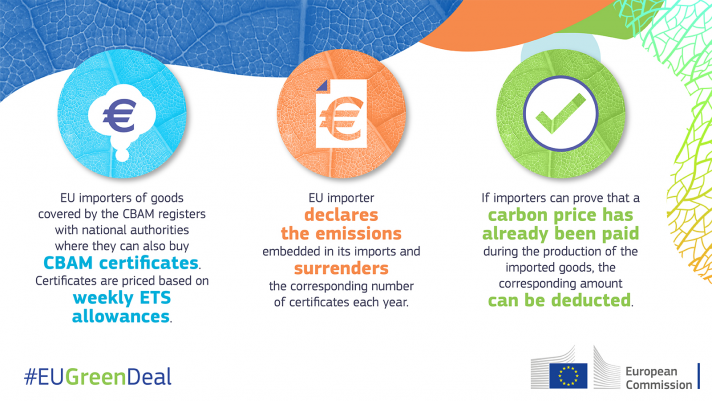“For the first time, we are going to ensure fair treatment between our companies, which pay a carbon price in Europe, and their foreign competitors, which do not. This is a major step that will allow us to do more for the climate while protecting our companies and our jobs.”
December 2022 was a busy month, so the adoption of the Carbon Border Adjustment Mechanism may have escaped notice. But for companies in the first six targeted industries, there is no time to wait. These are: cement, iron and steel, aluminum, fertilizer, electricity and hydrogen. While collectively the six industries account for 50% of the EU’s emissions, all sectors will be covered by 2030, with additional early focus on the chemicals, plastics and auto sectors.
CBAM starts on limited scale October 1, 2023 and goes into full force in 2026. Carbon credit prices will jump. The EU’s carbon credit market has a fixed supply. Importers must buy these credits if they have high emissions. Demand will far exceed supply.
Importers must provide an audited emissions statement on their prior year emissions, and a calculation of product-level emissions intensity, which is used to set their CBAM tax level by product.HOW CBAM WORKS
Regulators use audited emissions statements to determine the import tax
Source: European Commission
At the start, importers will need to report only direct emissions (Scope 1). The tax will be estimated, but no payment required. By 2026, however, importers will need to report indirect emissions as well, and pay any CBAM taxes.
The tax amount is based total emissions in the prior year appropriately allocated to imported product.
The importer pays the tax by buying EU ETS certificates, eg the carbon credits issued by EU businesses in the EU’s cap and trade system.
While this seems like just another trade tax, it is actually different. The EU is not only protecting its own businesses, it is effectively creating policy for importers. So the regulation has global reach. And as the tax payment is tied to EU carbon credits, which can only be issued by EU companies, as the price of carbon credits skyrockets, EU companies have greater financial incentive to reduce emissions.
